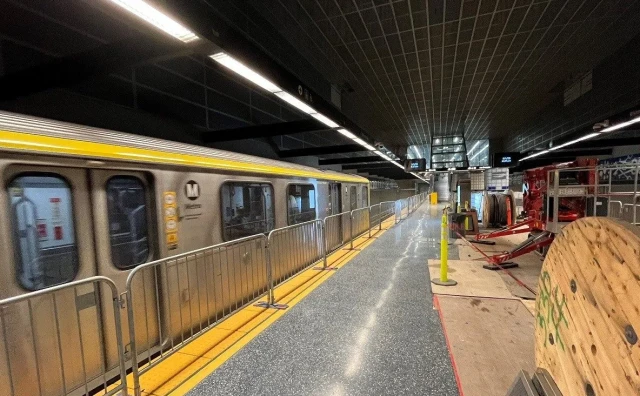With our free press under threat and federal funding for public media gone, your support matters more than ever. Help keep the LAist newsroom strong, become a monthly member or increase your support today during our fall member drive.
Sea Level Rise Puts Over 400 Toxic Sites At Risk Of Flooding

A new study from UCLA and UC Berkeley says that by the year 2100, hundreds of hazardous chemical sites on the California coast will be regularly flooded by a rise in sea level.
The study forecasts the worst impact will hit communities of color that are already facing health risks from industrial waste.
UCLA's Lara Cushing says among the places that might be hardest hit in SoCal are Long Beach and Wilmington.
"It's a community that disproportionately hosts a large number of environmental hazards, things like oil and gas wells … the Port of Long Beach and all the trucking that goes on through the neighborhood," Cushing said.
Wilmington is home to half of LA's active oil production, and researchers found that residents routinely report dizziness, shortness of breath, nosebleeds and headaches. People of color comprise 99% of Wilmington's population.
The project mapped hazardous sites along the California coast and overlaid socio-economic data that shows how disadvantaged communities are five times more likely to live less than one mile from facilities at risk of flooding.
Cushing also said the study factored in language barriers and voter turnout when considering how badly these areas might be affected.
"To prevent future flood risks, there's a real need to have political engagement and resources directed to environmental justice communities on the fence lines of these industries," said Cushing.
Without dramatic action on climate change, it's estimated that some 145,000 residents and more than 400 "hazardous sites" throughout the state could see flooding by the end of the century due to sea level rise.
At LAist, we believe in journalism without censorship and the right of a free press to speak truth to those in power. Our hard-hitting watchdog reporting on local government, climate, and the ongoing housing and homelessness crisis is trustworthy, independent and freely accessible to everyone thanks to the support of readers like you.
But the game has changed: Congress voted to eliminate funding for public media across the country. Here at LAist that means a loss of $1.7 million in our budget every year. We want to assure you that despite growing threats to free press and free speech, LAist will remain a voice you know and trust. Speaking frankly, the amount of reader support we receive will help determine how strong of a newsroom we are going forward to cover the important news in our community.
We’re asking you to stand up for independent reporting that will not be silenced. With more individuals like you supporting this public service, we can continue to provide essential coverage for Southern Californians that you can’t find anywhere else. Become a monthly member today to help sustain this mission.
Thank you for your generous support and belief in the value of independent news.

-
Kevin Lacy has an obsession with documenting California’s forgotten and decaying places.
-
Restaurants share resources in the food hall in West Adams as Los Angeles reckons with increasing restaurant closures.
-
It will be the second national day of protest against President Donald Trump.
-
The university says the compact, as the Trump administration called it, could undermine free inquiry and academic excellence.
-
This is the one time you can do this legally!
-
Metro officials said it will be able to announce an opening date “soon.”







